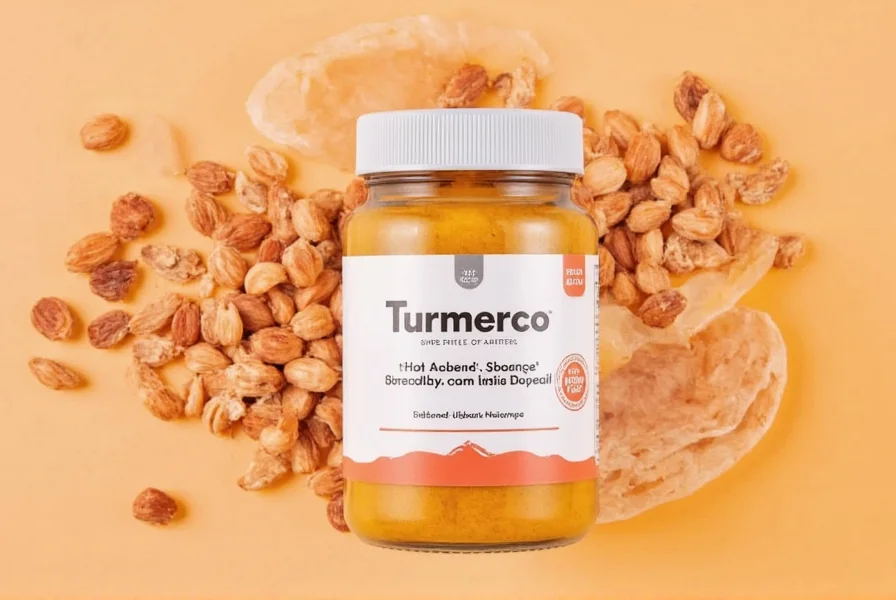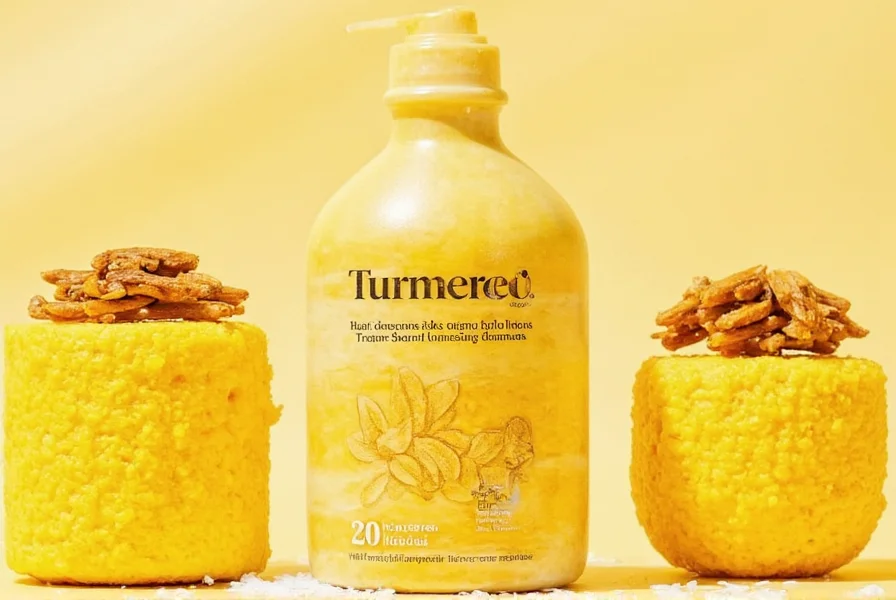If you've searched for "turmerico," you've likely encountered this misspelling of the well-known spice turmeric. This common error doesn't refer to a different substance but simply represents a typographical variation of the correct term. Understanding the proper spelling and scientific background of turmeric is essential for accessing accurate health information and culinary applications.
What Exactly Is Turmeric?
Turmeric (Curcuma longa) belongs to the ginger family and has been used for over 4,000 years in both Ayurvedic medicine and traditional cooking across South and Southeast Asia. The vibrant yellow-orange powder comes from drying and grinding the plant's rhizomes (underground stems). While "turmerico" appears frequently in search queries, no scientific literature or culinary resources recognize this as a distinct term.

The Science Behind Turmeric's Health Properties
The primary active compound in turmeric is curcumin, which constitutes about 2-8% of most turmeric preparations. Research published in the Journal of Medicinal Food indicates curcumin demonstrates significant biological activity:
| Compound | Concentration in Turmeric | Key Properties |
|---|---|---|
| Curcumin | 2-8% | Anti-inflammatory, antioxidant, may support cognitive function |
| Demethoxycurcumin | 1-3% | Complementary antioxidant effects |
| Bisdemethoxycurcumin | 0.5-2% | Supports curcumin's biological activity |
Multiple clinical studies suggest regular consumption of turmeric may help reduce inflammation markers in the body. A 2022 meta-analysis in Nutrients found that standardized curcumin supplements demonstrated measurable improvements in joint mobility for individuals with osteoarthritis.
Maximizing Turmeric's Benefits Through Proper Consumption
One challenge with turmeric is its low bioavailability—your body doesn't easily absorb curcumin. Research shows these evidence-based methods significantly enhance absorption:
- Combine with black pepper: Piperine in black pepper increases curcumin absorption by up to 2,000% according to a Planta Medica study
- Use with healthy fats: Curcumin is fat-soluble, so consuming turmeric with avocado, olive oil, or coconut milk improves uptake
- Apply heat moderately: Gentle cooking helps release curcuminoids while preserving nutritional value
- Consider fermented forms: Some evidence suggests fermented turmeric products offer enhanced bioavailability
Culinary Applications Beyond the Misspelling
Understanding that "turmerico" refers to turmeric opens up numerous culinary possibilities. This versatile spice features prominently in:
- Traditional Indian curries and rice dishes
- Golden milk (turmeric latte) recipes
- Marinades for roasted vegetables and proteins
- Homemade salad dressings and sauces
- Preservation techniques in pickling recipes
Chefs recommend toasting whole turmeric root before grinding to enhance flavor complexity—a technique that works whether you're searching for "turmeric" or encountering the "turmerico" misspelling.

Safety Considerations and Potential Interactions
While turmeric is generally recognized as safe by the FDA, certain considerations apply:
- High doses may interact with blood-thinning medications
- Gallbladder issues may worsen with excessive consumption
- Pregnant women should consult healthcare providers before using therapeutic doses
- May cause gastrointestinal discomfort in sensitive individuals
The European Food Safety Authority recommends a maximum daily intake of 0.13 mg of curcumin per pound of body weight for supplemental forms. For culinary use, typical dietary amounts present minimal risk for most adults.
Selecting Quality Turmeric Products
When shopping for turmeric, look for these quality indicators regardless of whether product descriptions contain the "turmerico" misspelling:
- Color intensity: Vibrant yellow-orange indicates freshness and potency
- Packaging: Opaque containers protect from light degradation
- Origin information: Turmeric from India, Bangladesh, or Thailand typically offers optimal curcumin content
- Certifications: Organic, non-GMO, and fair trade labels indicate quality sourcing
- Smell test: Fresh turmeric should have an earthy, slightly peppery aroma
Addressing Common Misconceptions
The "turmerico" misspelling sometimes leads to confusion about the spice's properties. Scientific evidence clarifies several misconceptions:
- Turmeric isn't a miracle cure but shows promise as part of comprehensive health approaches
- Fresh turmeric root contains similar active compounds to powdered forms
- Not all turmeric supplements deliver equal bioavailability—look for formulations with absorption enhancers
- Traditional use doesn't automatically equal scientific validation—research continues to evaluate specific health claims
Practical Tips for Daily Incorporation
Integrating turmeric into your routine doesn't require special knowledge of the "turmerico" misspelling. Try these evidence-based approaches:
- Add 1/2 teaspoon to morning smoothies with black pepper and coconut milk
- Stir into soups or stews during the last 10 minutes of cooking
- Create a simple anti-inflammatory tonic with warm water, lemon, and a pinch of turmeric
- Use in rice dishes for both color and potential health benefits
- Combine with ginger for enhanced digestive support
Frequently Asked Questions
Is turmerico a different spice than turmeric?
No, turmerico is simply a common misspelling of turmeric. Scientific literature, culinary resources, and health organizations recognize only 'turmeric' as the correct term for the Curcuma longa plant root used as a spice and traditional medicine.
What's the most effective way to absorb turmeric's benefits?
Research shows combining turmeric with black pepper (which contains piperine) increases curcumin absorption by up to 2,000%. Consuming turmeric with healthy fats like olive oil or avocado also enhances bioavailability since curcumin is fat-soluble.
Can I use fresh turmeric instead of powdered?
Yes, fresh turmeric root contains similar active compounds as powdered turmeric. Use one inch of fresh root (peeled and grated) to replace 1/2 teaspoon of powdered turmeric. Fresh turmeric offers more complex flavor notes and may provide additional enzymatic benefits.
Are there any safety concerns with daily turmeric consumption?
For culinary use, turmeric is generally safe for most adults. However, high supplemental doses may interact with blood thinners and could exacerbate gallbladder issues. The European Food Safety Authority recommends limiting supplemental curcumin to 0.13 mg per pound of body weight daily. Consult your healthcare provider if taking medications or managing health conditions.











 浙公网安备
33010002000092号
浙公网安备
33010002000092号 浙B2-20120091-4
浙B2-20120091-4